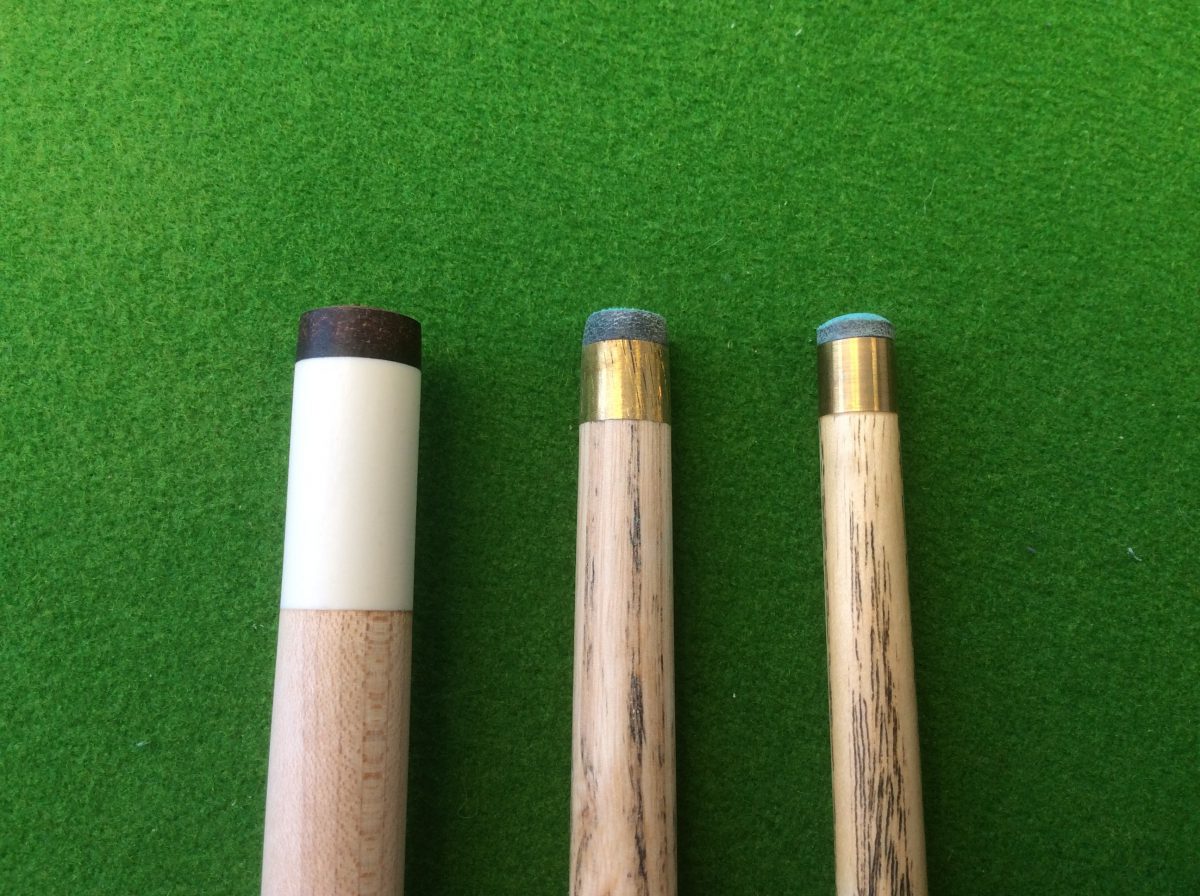What is the best tip size for my cue?
The tip sizes for cues are normally determined by the size of the cue ball you are playing with so the smaller the cue ball the smaller the tip.
Generally speaking most pool players prefer and 8mm to 8.5mm tip for a 1 & 7/8 pool cue ball, and most snooker players prefer a 9.5mm to 10mm tip for a full size 2 1/16 snooker cue ball. American pool uses an even bigger cue ball so the tip sizes are normally between 12.5 mm and 13.5mm. American 9 ball cues also use bigger white ferules to give the cue more strength when hitting the bigger ball.
The standard cue ball for English 8 ball is 1 7/8 because it has to go through the ball return. With a table that has no ball return (not coin operated) then all the balls, including the cue ball will be the same size.
English 8 ball cues and snooker cue shafts are most commonly made with ash and American Pool cues are made in maple with a straight taper. It is important to realize English 8 ball and American nine ball are only called those names because those are the countries in which those cue sports are mostly played and developed. 9 Ball is very popular in many other countries around the world, especially Canada. Likewise English 8 Ball is popular worldwide and is especially very popular in France.
Of-course there are also many different sizes of table which also use different size balls but the above tip sizes are the most commonly used. We do supply snooker and pool cues with many other tip sizes as well if required.
Sometimes we get some inquiries for 7mm tip cues, and though we can supply these at an extra cost we do not recommend for most players. Some players believe that a small tip size gives them more cue ball control but you need to be a very good player indeed to be able to get any extra benefit from a tip of this size as it can sometimes cause miscues.
Also, the wood beneath a 7mm ferule would be very small and this can more easily cause the ferule to snap off completely, especially when playing power shots. Certainly we could not guarantee this would not happen on any cue purchased from us with a 7mm ferule / tip and this is why we recommend 8mm to 8.5mm for pool cues.
In truth you can play all pool sports with a bigger tip if you wanted to, that is why most pub cues have a 12 or 13mm tip. However it is more difficult to play snooker with a very small tip. Remember, as well as the increased chance of miscuing the strain of a heavy impact on a bigger heavier ball will increase the chances of the ferule breaking off altogether.


 My name is Evgeni Govedarov and I want to ask a couple of questions related to one of your snooker cues. I am particularly looking at this one
My name is Evgeni Govedarov and I want to ask a couple of questions related to one of your snooker cues. I am particularly looking at this one